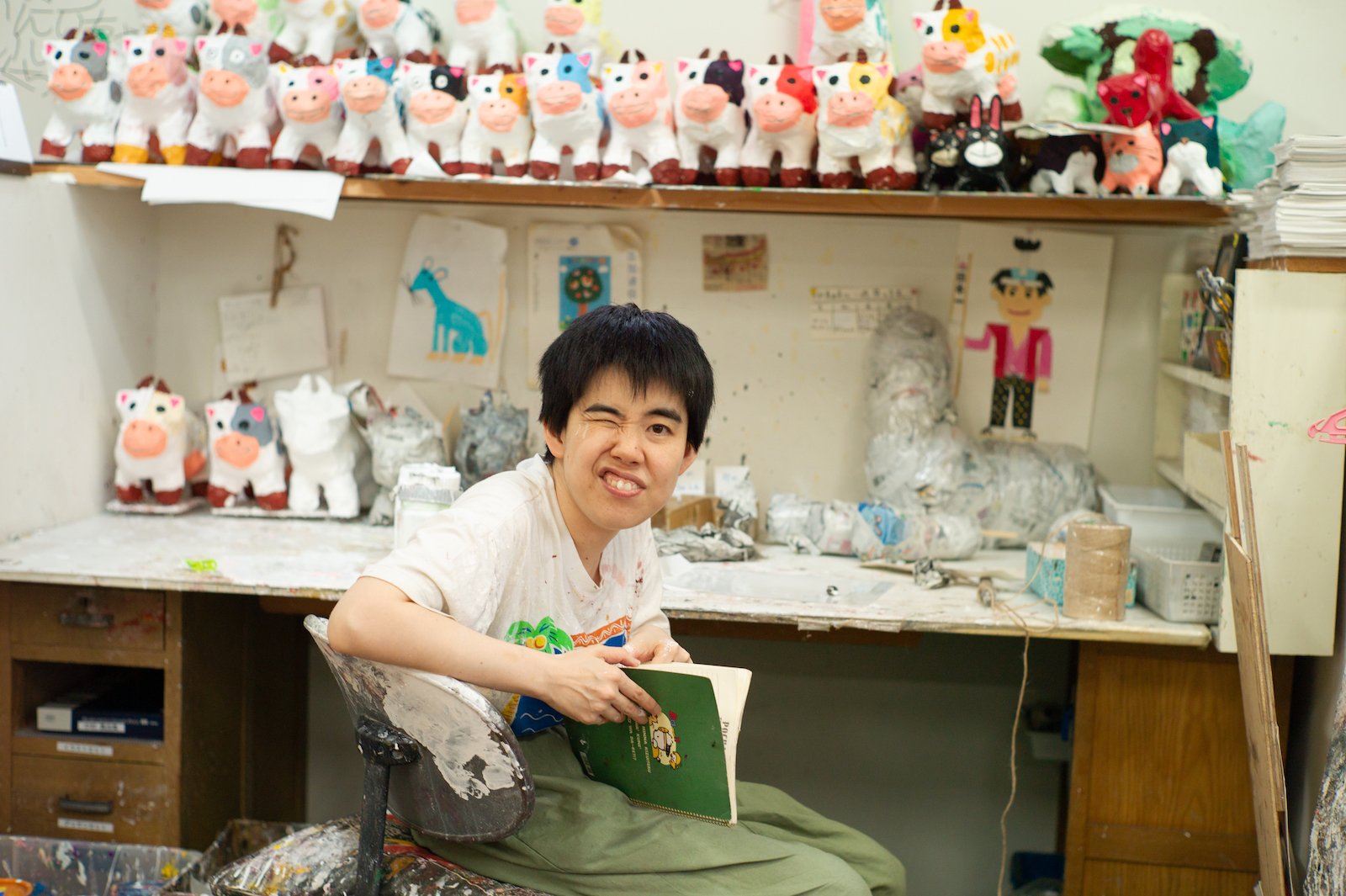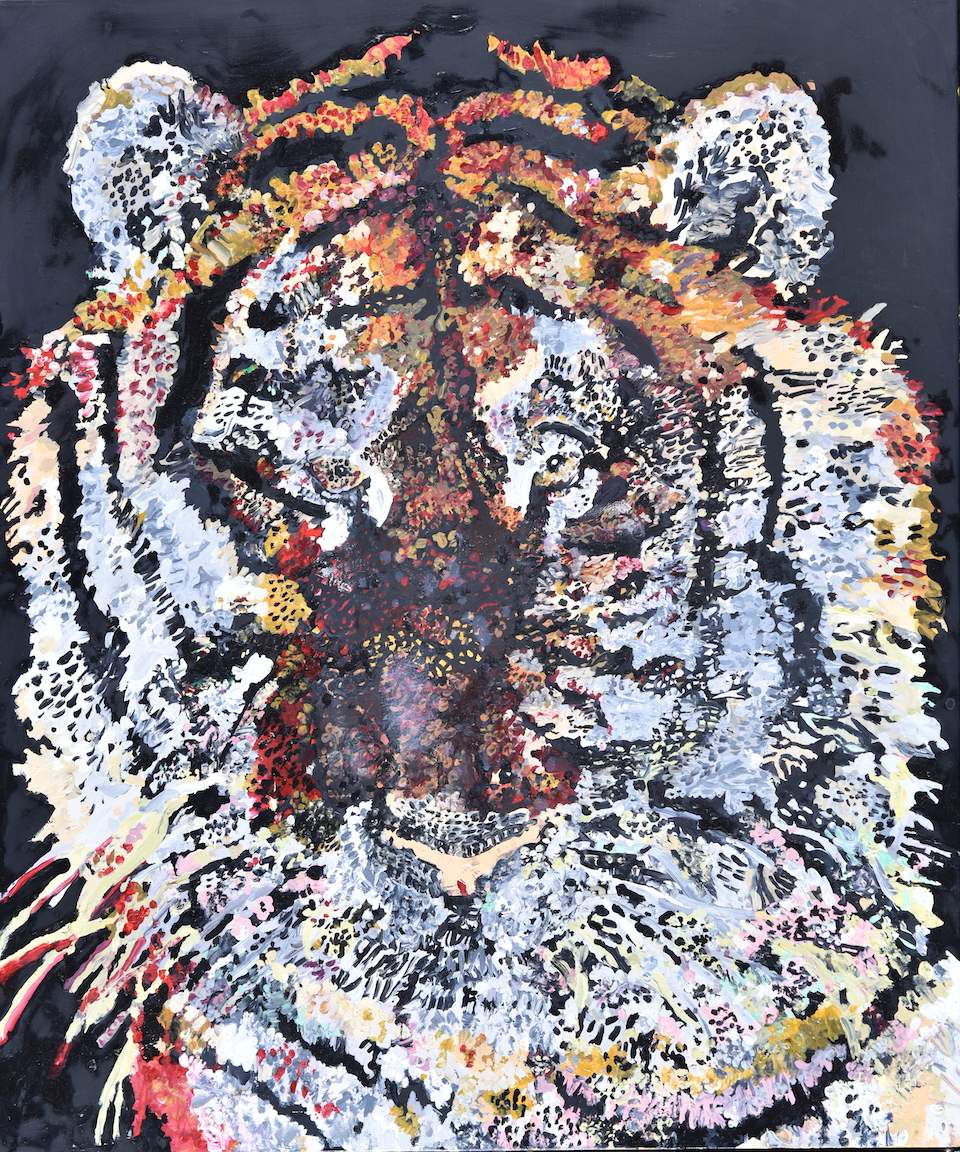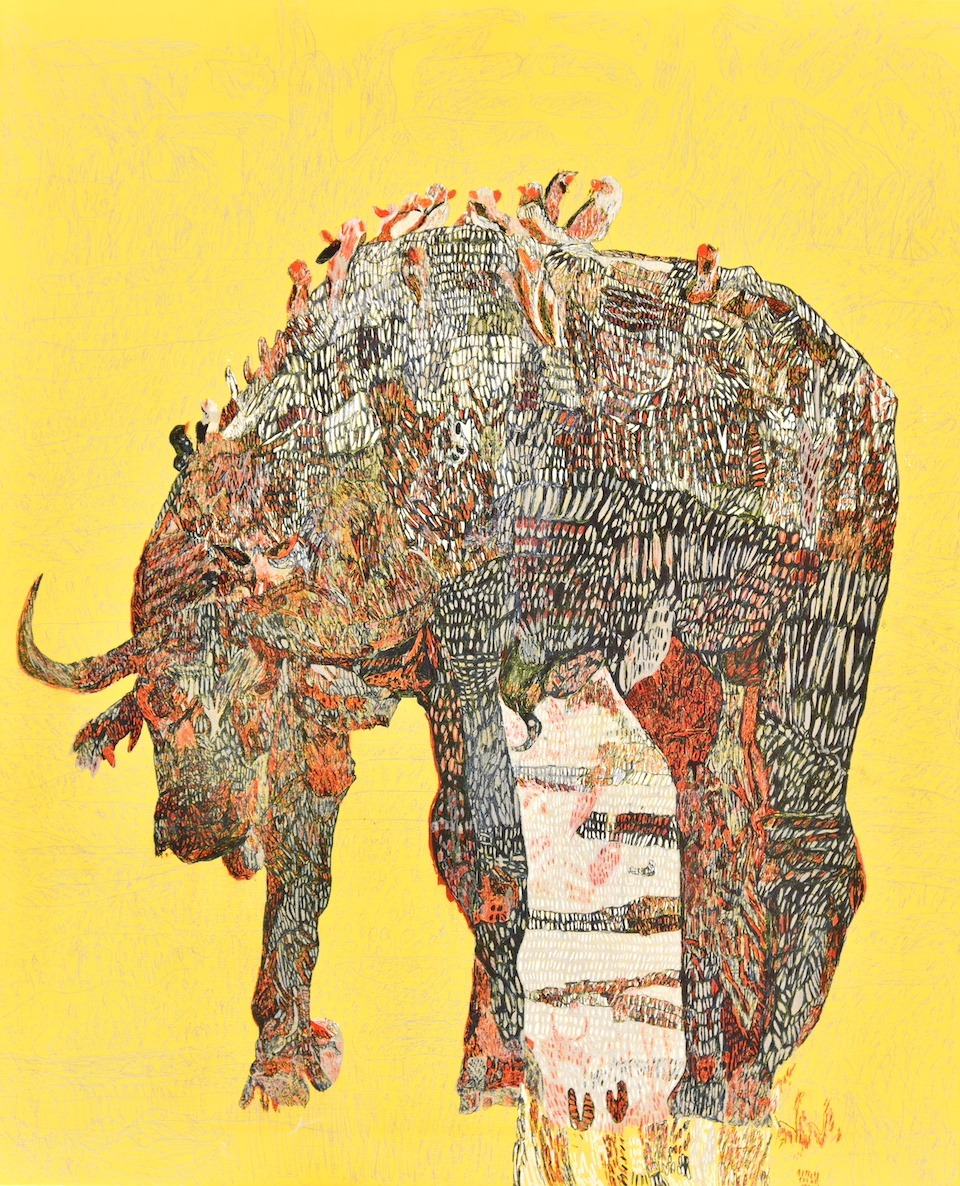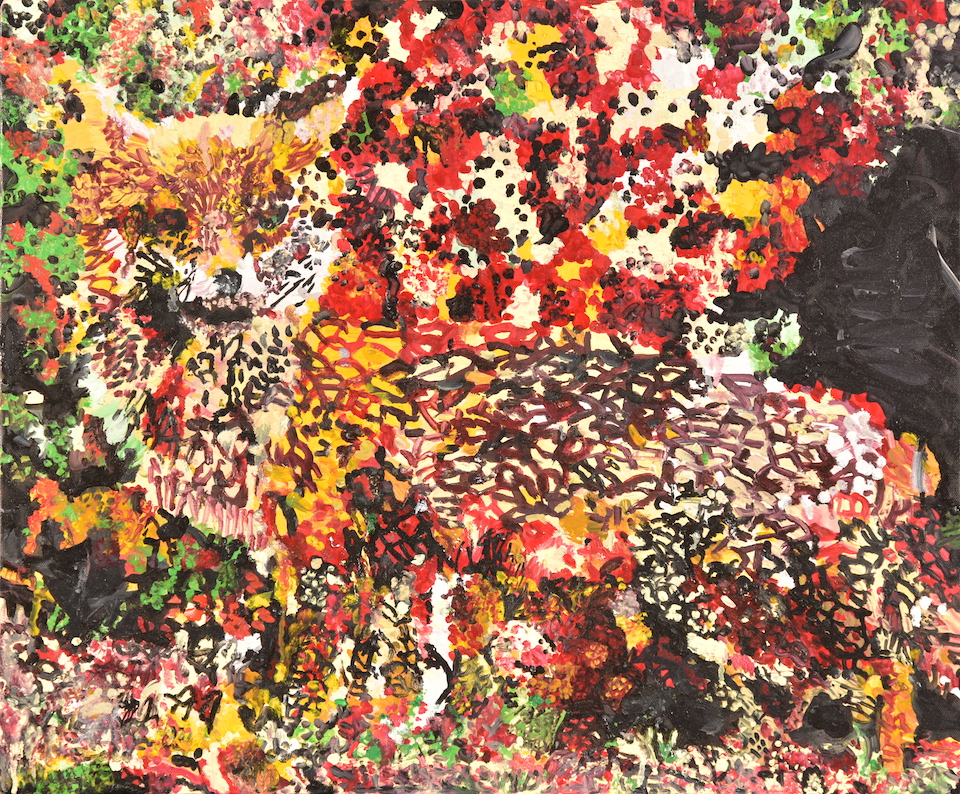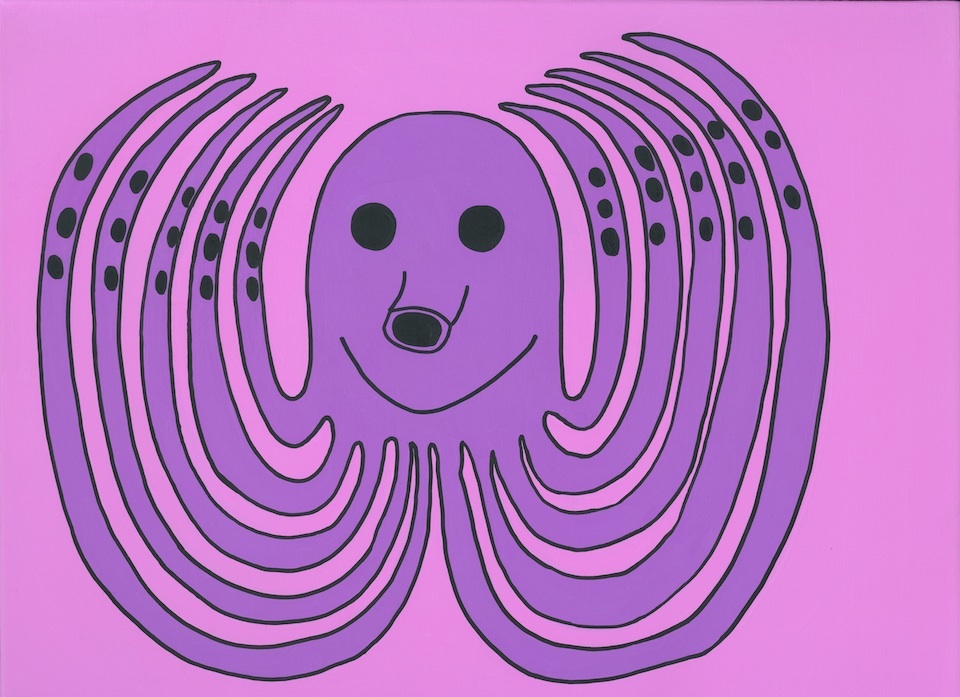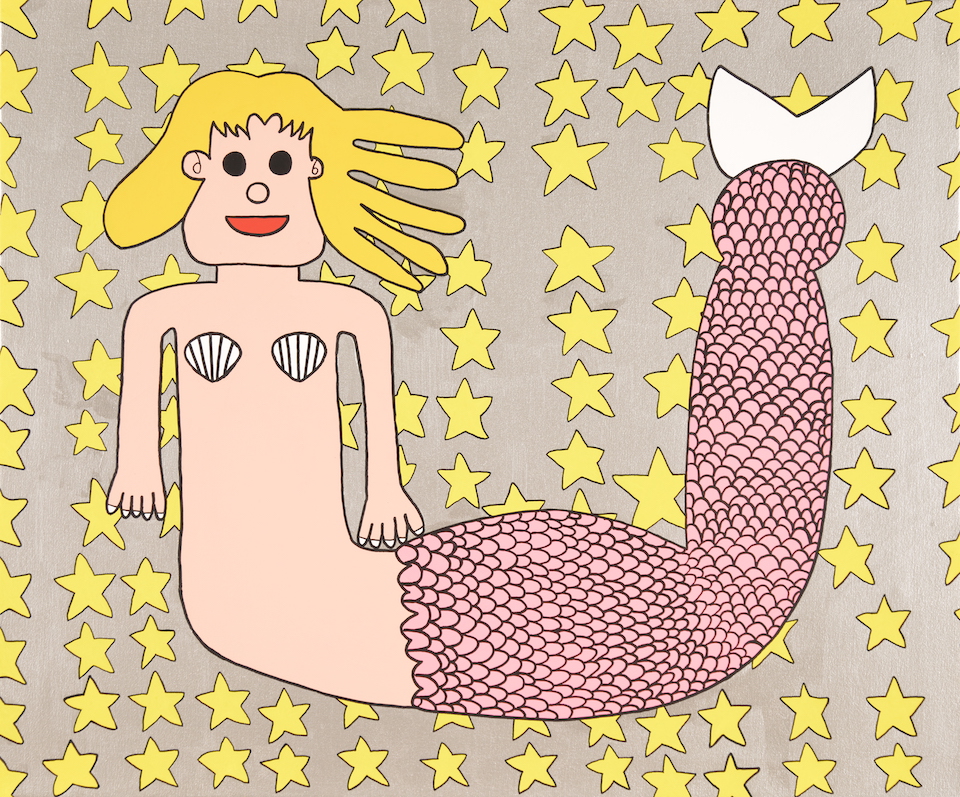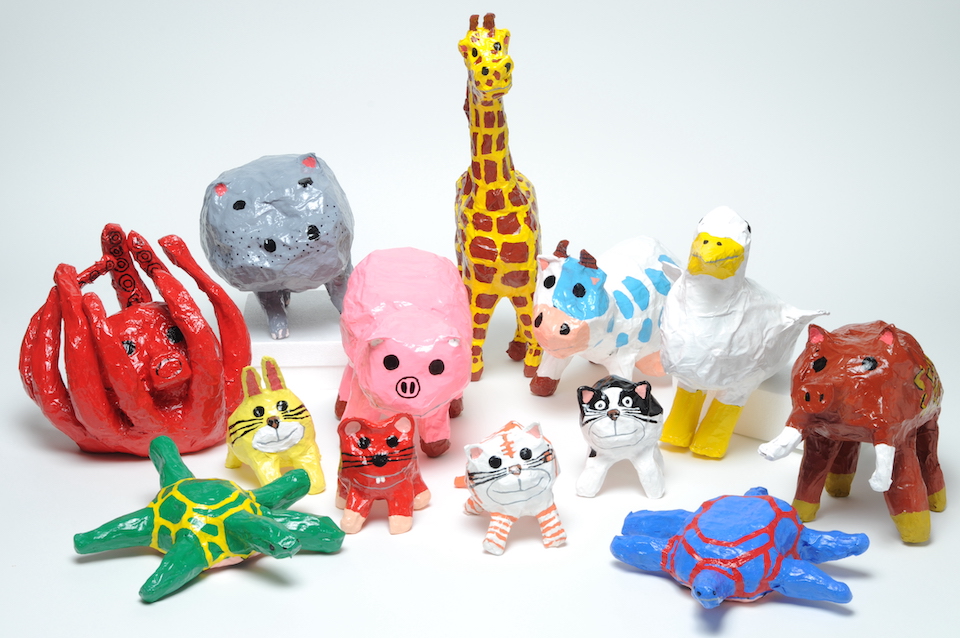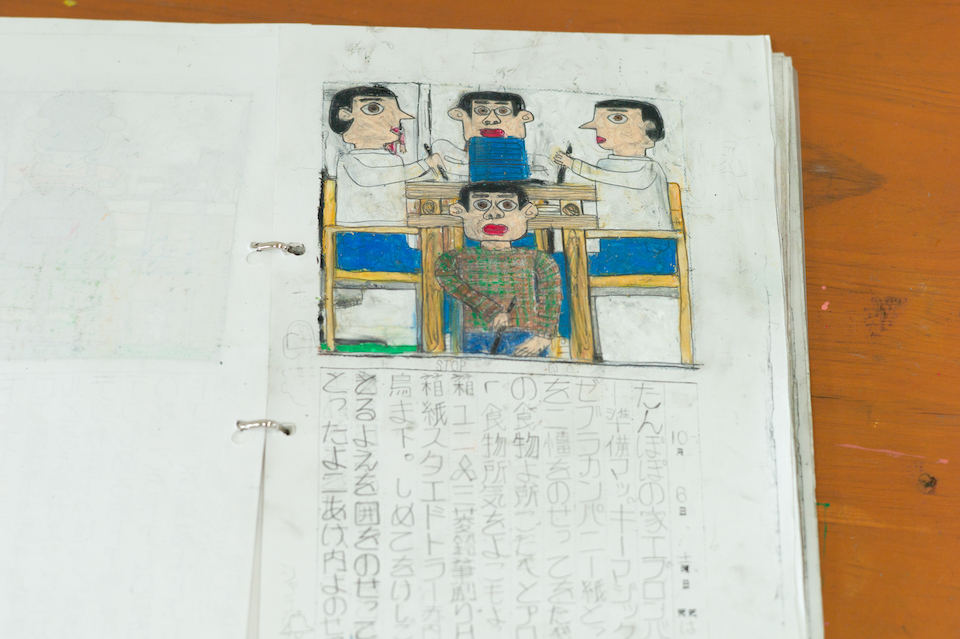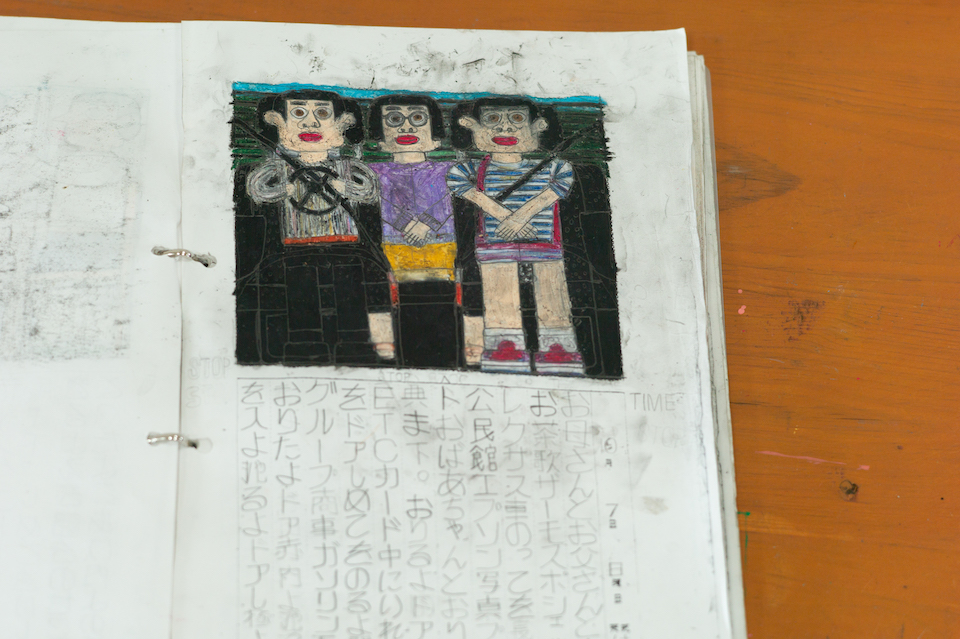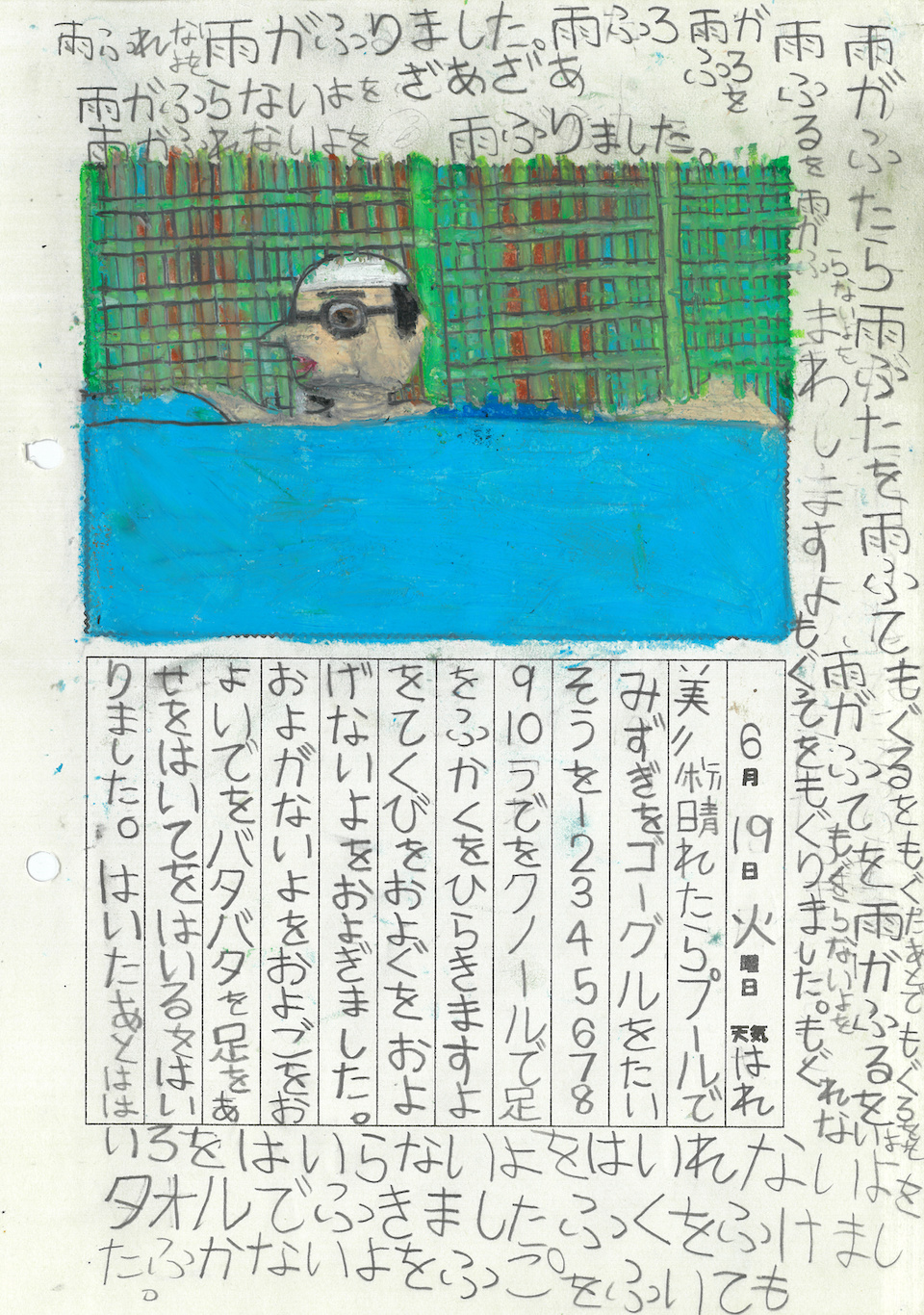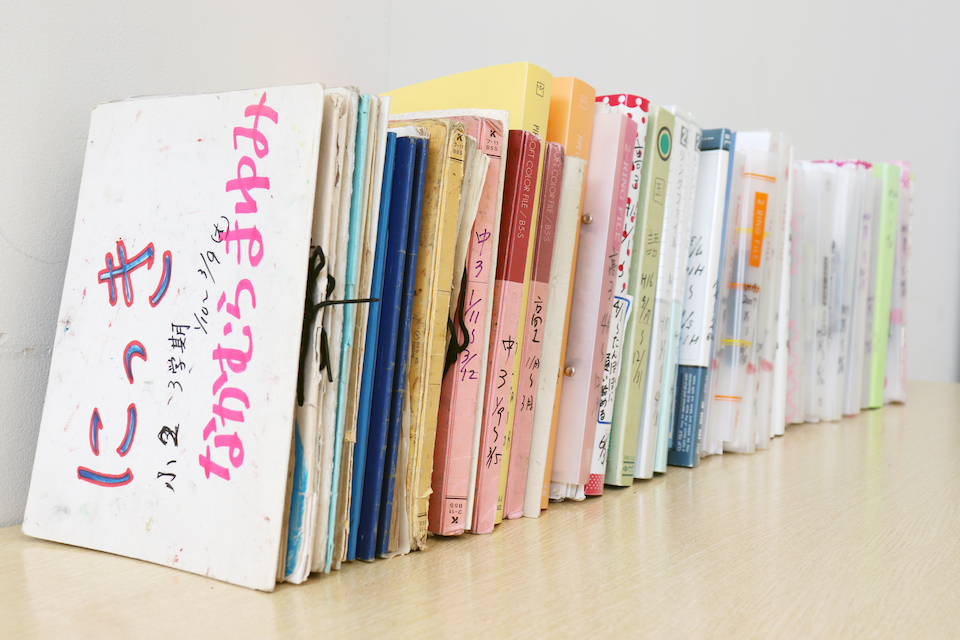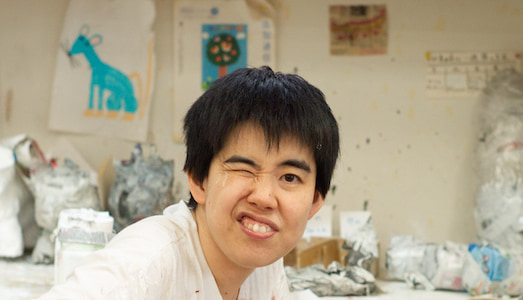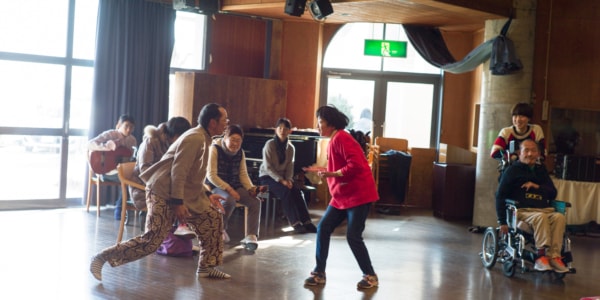A celebrity in the studio working in papier-mâché
In the back of a spacious and brightly-lit studio, a shelf draws the eye. The shelf is covered with colorful papier-mâché figures. They have a soft cuteness that is relaxing to look upon, but the artist, seated at a desk under the shelf, is furiously engaged in the work of creation. This is NAKAMURA Mayumi.
The location is the 〈Tanpopo-No-Ye Art Center HANA〉 in Nara City. Nakamura is one of HANA’s most popular artists.
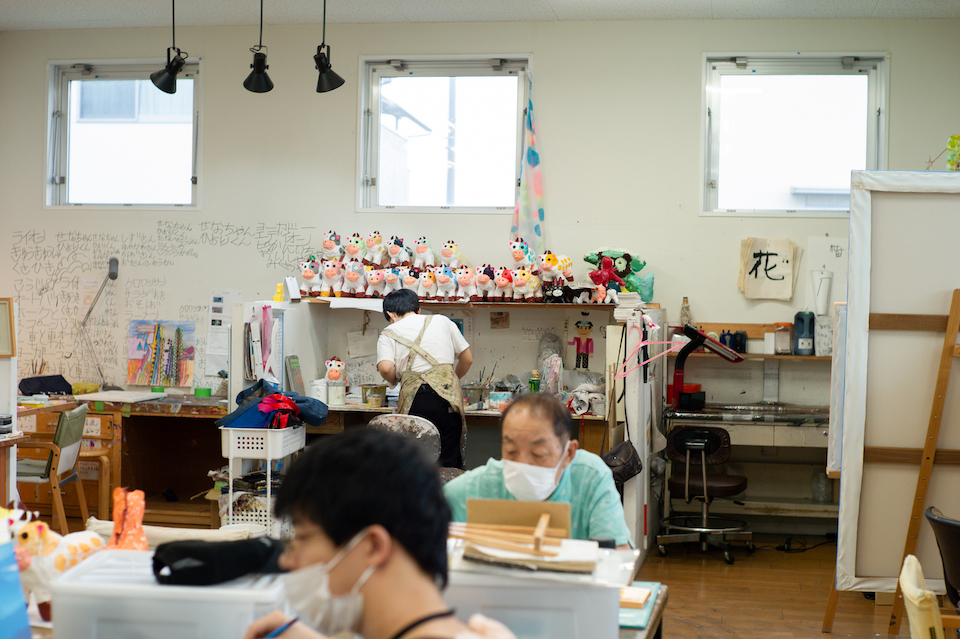
The studio of 〈Tanpopo-No-Ye Art Center HANA〉. Nakamura is at the desk in the back.
Nakamura learned oil painting in her teens and began engaging in full-fledged artistic activities in this studio in 2004 around the age of 20. Starting with illustrations, in recent years Nakamura has been focused on papier-mâché. To date, she’s made around 250 papier-mâché figures.
YOSHINAGA Tomoki, in charge of the studio program, says Nakamura is practically a celebrity in the studio.
“She looks so cool when she’s concentrating on making her art. Other studio members often talk with Mayumi, and she’s admired by everyone.”
Nakamura definitely makes no wasted movements. Her hand moves without hesitation, and the way she works is so masterful it is entrancing.
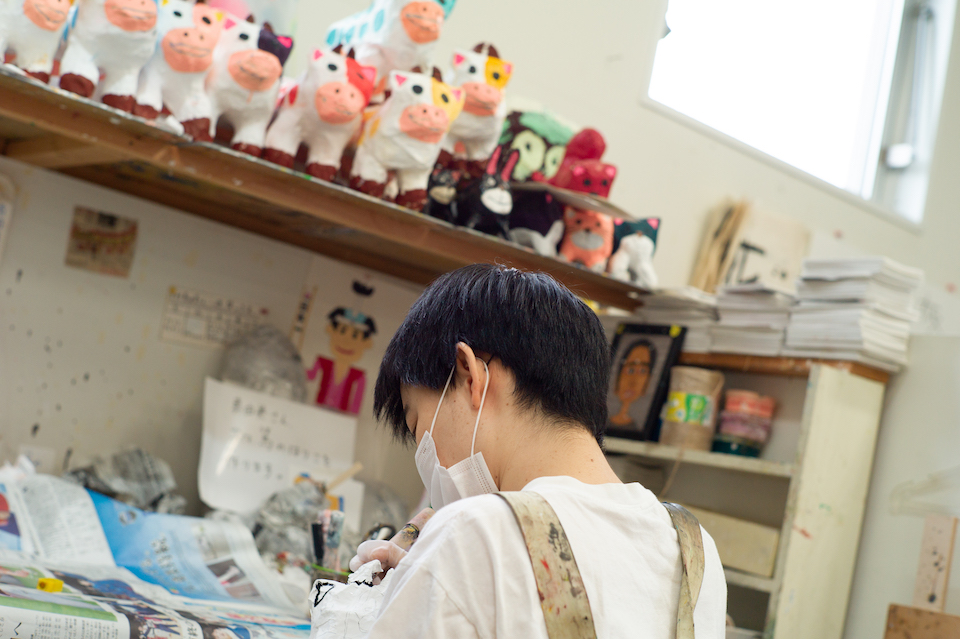
Nakamura concentrating on her work.
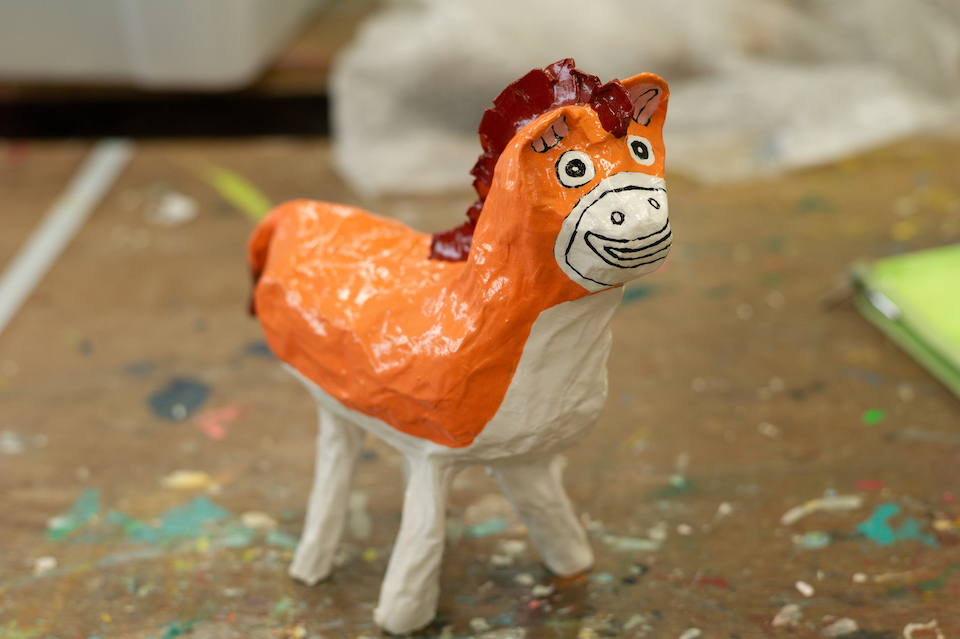
Her papier-mâché figures exude a soft cuteness.
Able to concentrate on creating art for hours on end
Nakamura makes her papier-mâché art by creating shapes with newspaper and solidifying them with glue. Then, after they have dried, she carefully paints them. While one figure is drying, she’ll start work on making or painting another.
Her creations look like 3D illustrations that have leaped off the page. The way her hands move when making her figures is more like she is rearing than crafting them, so to speak. The individual, uneven bumps and dents make them all the more endearing, and the thickness of the innumerable layers of paint used dramatically increases the presence they exude.
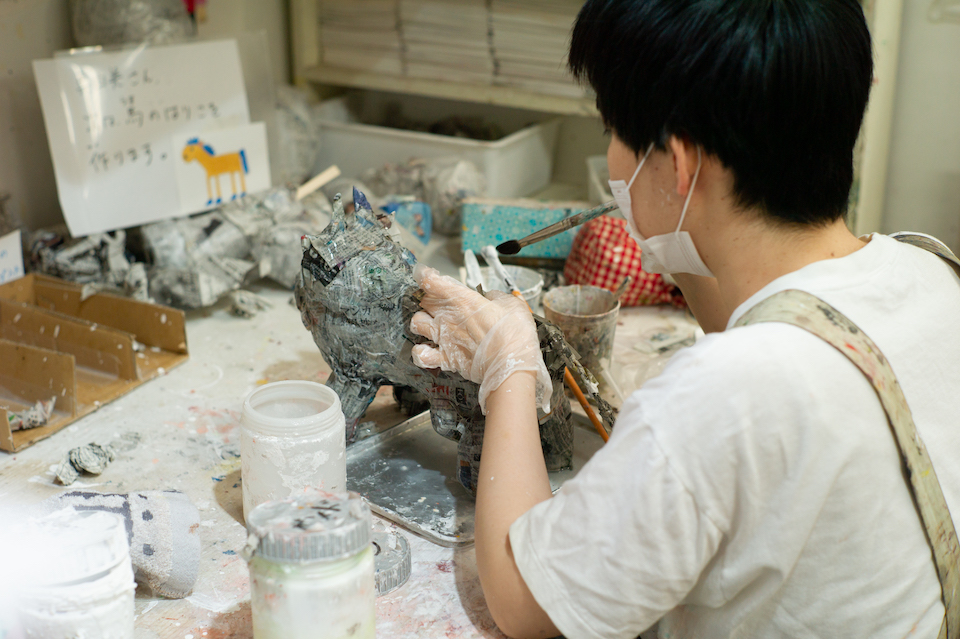
Nakamura makes her papier-mâché art by creating shapes with newspaper and solidifying them with glue.
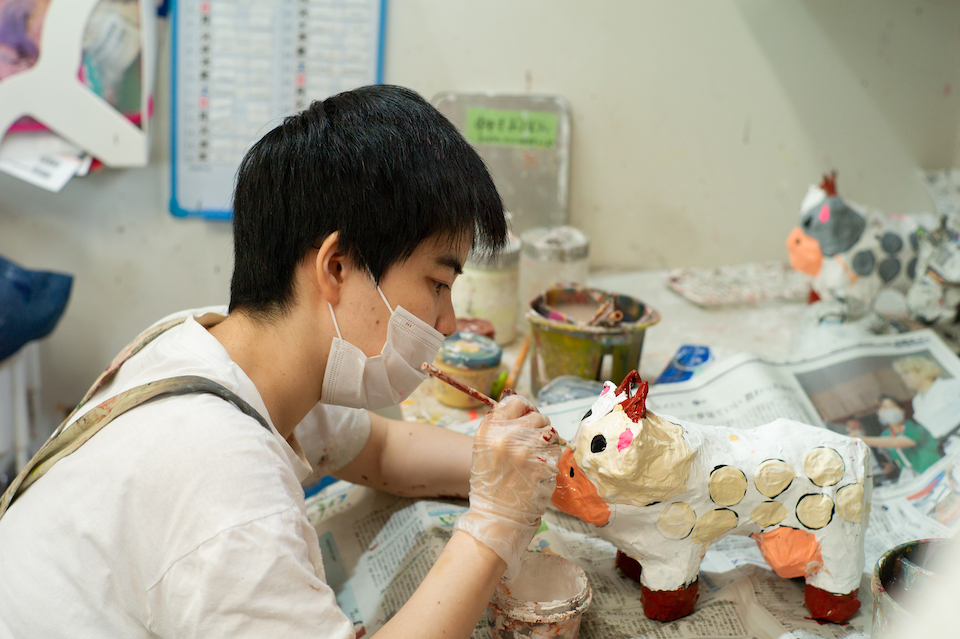
While one figure is drying, she’ll start work on making or painting another.
When working, Nakamura pays no mind if someone talks to her, or even points a camera at her. Her hands do not stop moving, even for a second. Day after day, she continues to make her art uninfluenced by anyone else.
After watching her work for a while, Nakamura begins singing unique arrangements of songs like “Omatsuri Ninja” in a quiet voice at ultra-high speed. Perhaps it’s just an expression of her good mood, but it also almost sounds like her own incantation to enter the world of her creations.
It’s this ability to concentrate which most characterizes Nakamura’s work. Apparently, however, Nakamura gets so wrapped up that she sometimes gets overloaded.
Yoshinaga says, “Nakamura sometimes works too long and too hard. When she comes into the studio, she’ll prioritize continuing to work over anything else. And when she does that, it starts getting hard on the artist herself and the quality of her work can suffer as well.”
Support staff watch over her when she works at all times and gets her to work on a new piece before she gets too overloaded. Support staff who have worked in tandem with the artist for many years came up with this idea after much trial and error.
“Changing the motif results in the creation of a variety of works. Doing this also helps the artist to calm down, and to keep the quality of her work stable as well,” says Yoshinaga.
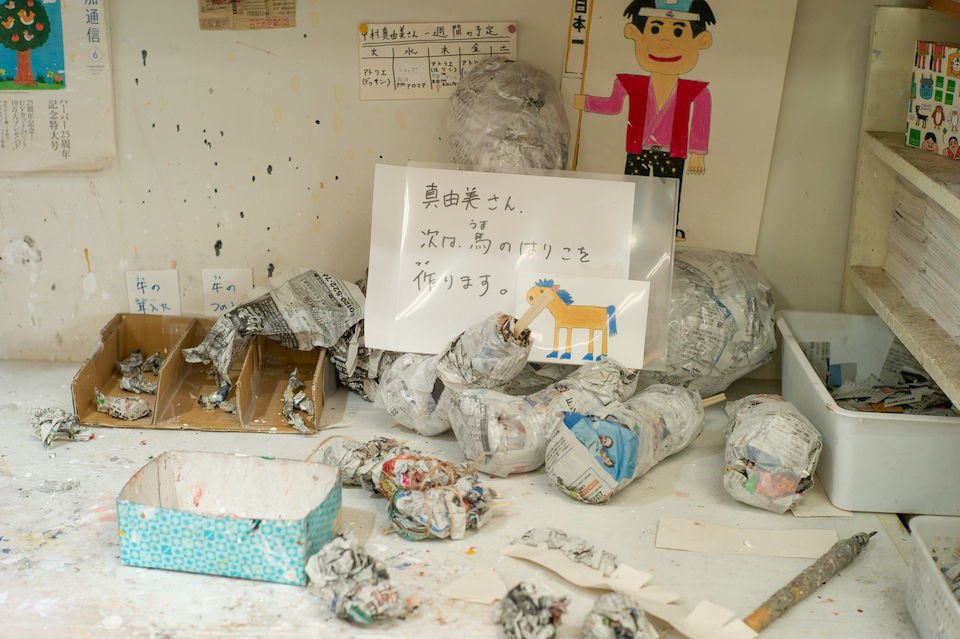
A suggestion for Nakamura’s next motif, provided by the staff, stands on the table.
Changes in motif result in stunning changes in style
Nakamura doesn’t just work in papier-mâché. In addition to humorous illustrations, her wide-ranging works include delicate depictions of animals created with oil paints, acrylics, and colored pencils.
Further, her journal entries, which she has diligently created since elementary school, have been archived, and the rich world depicted therein is mesmerizing.
Her art styles are so different that it’s hard to believe they were all made by the same artist. Where do these differences come from?
According to Yoshinaga, “She makes her detailed, pointillist-like pictures of animals by looking at photos and picture books, while she makes her papier-mâché figures and illustrations based on the images she has in her head.” Yoshinaga told me that what they all have in common is that Nakamura faithfully creates the things she sees.
Whether an image in her head or in a picture book, it is her desire to create and her ability to concentrate which enables her art.
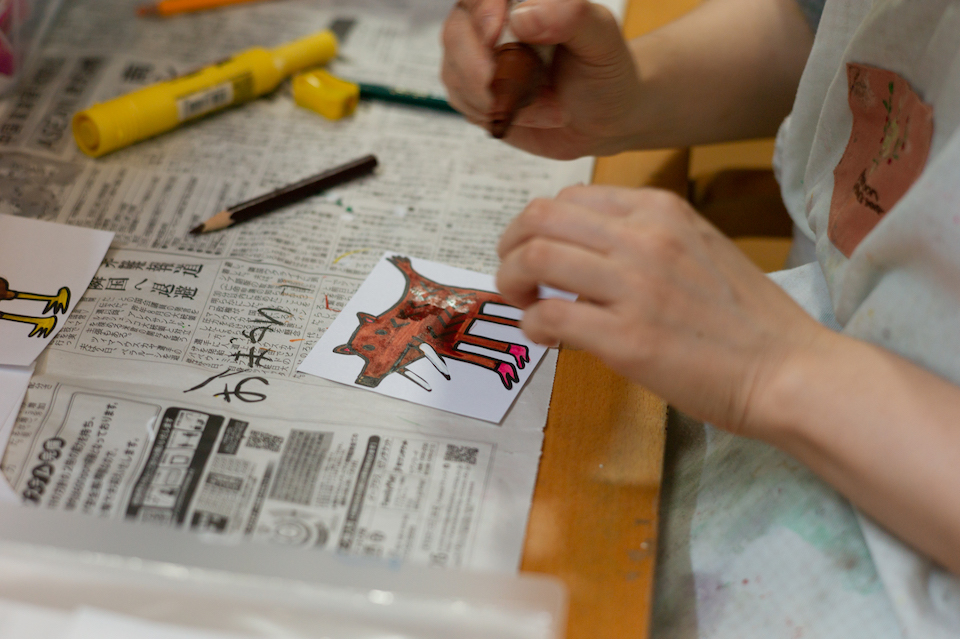
Nakamura’s illustrations, apparently models for her papier-mâché figures, are drawn based on what she sees in her head.
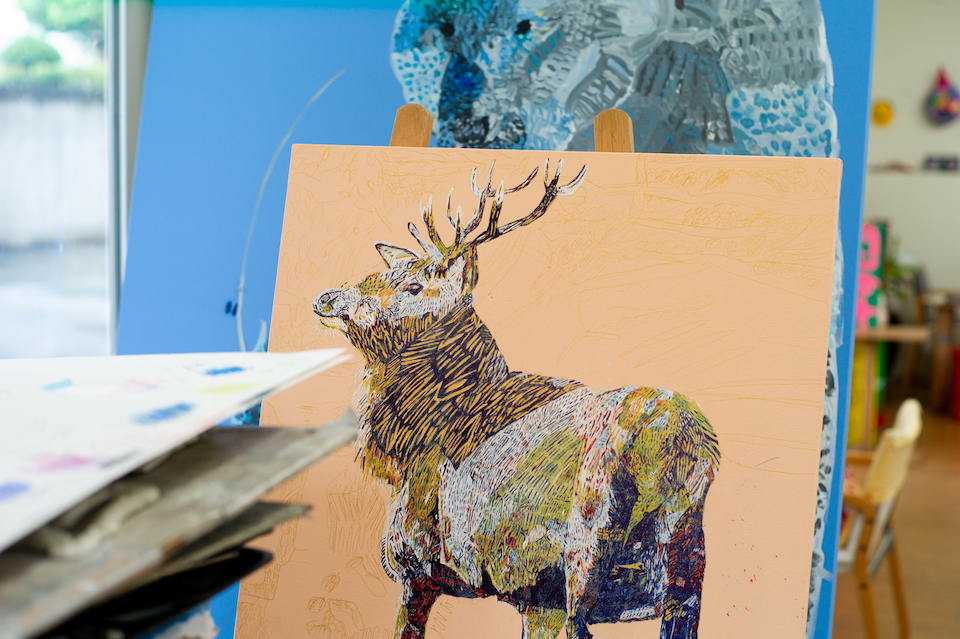
Nakamura creates her animal pictures by looking at pictures and faithfully reproducing them. Her images are minutely detailed and create a strong impression!
What kind of art will Nakamura create next? With this “celebrity’s” endless ambition and the support of the staff who watch over her work, it seems likely Nakamura’s art will undergo yet many further developments in the future.
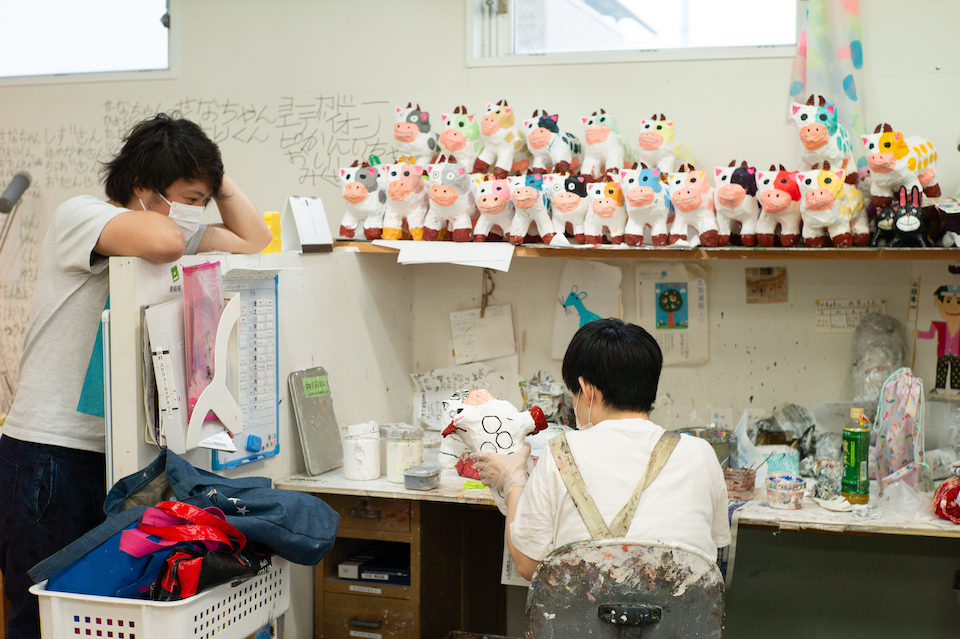
YOSHINAGA Tomoki, in charge of the studio program, regularly watches over Nakamura’s work.
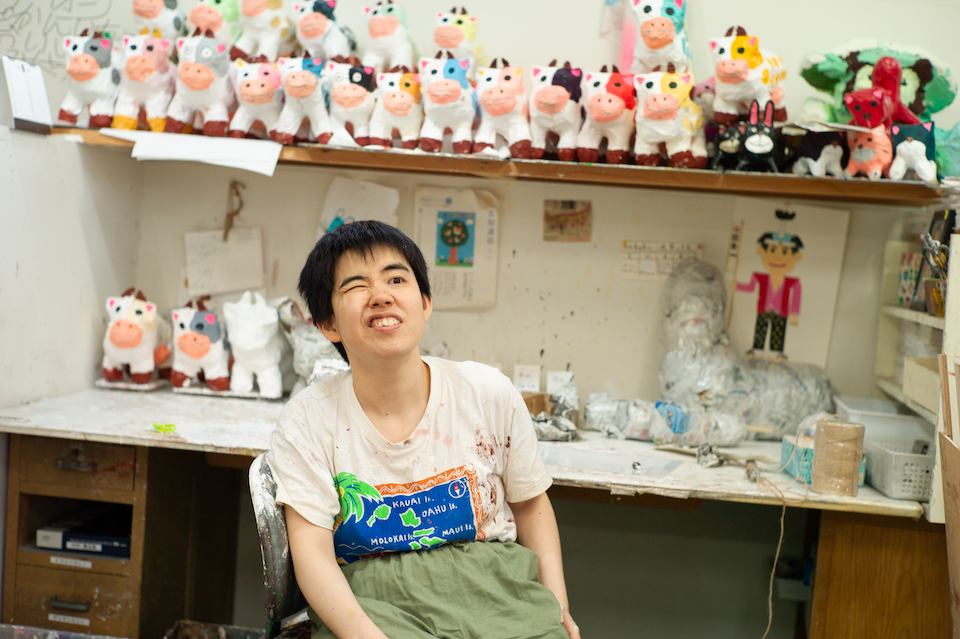
After three hours of working, Nakamura feels relieved.




